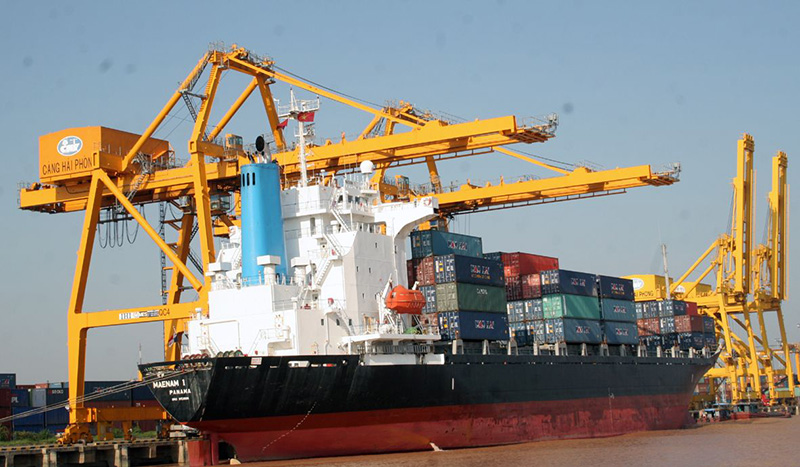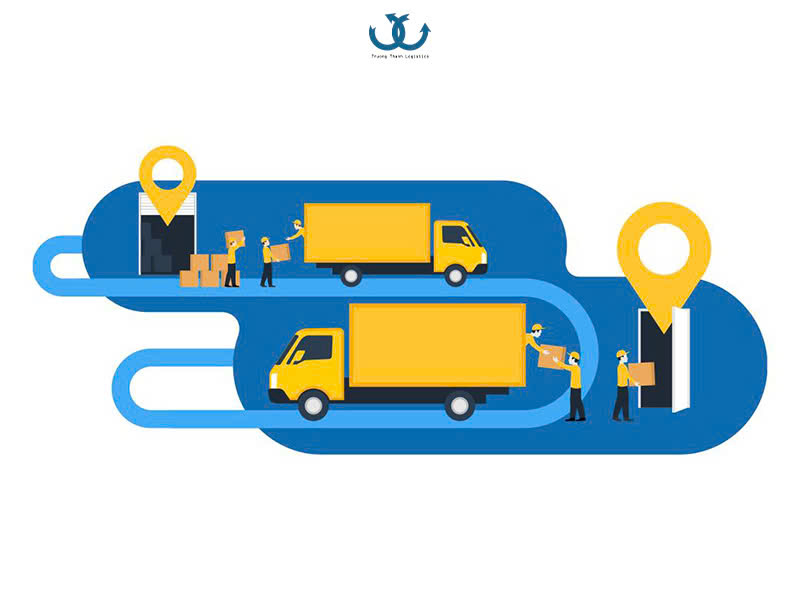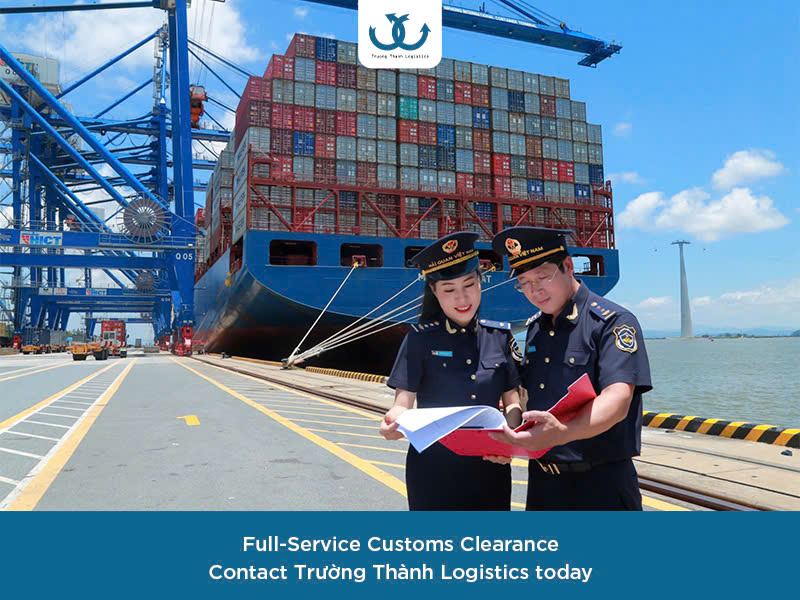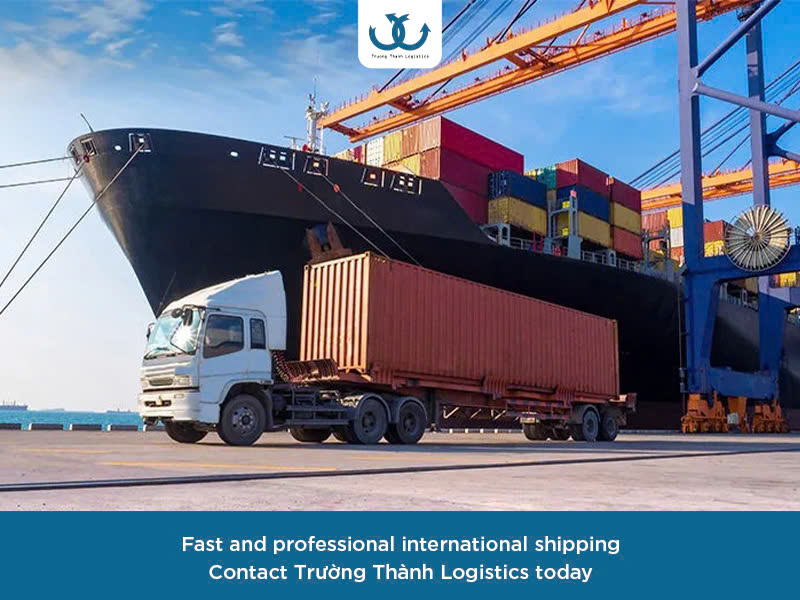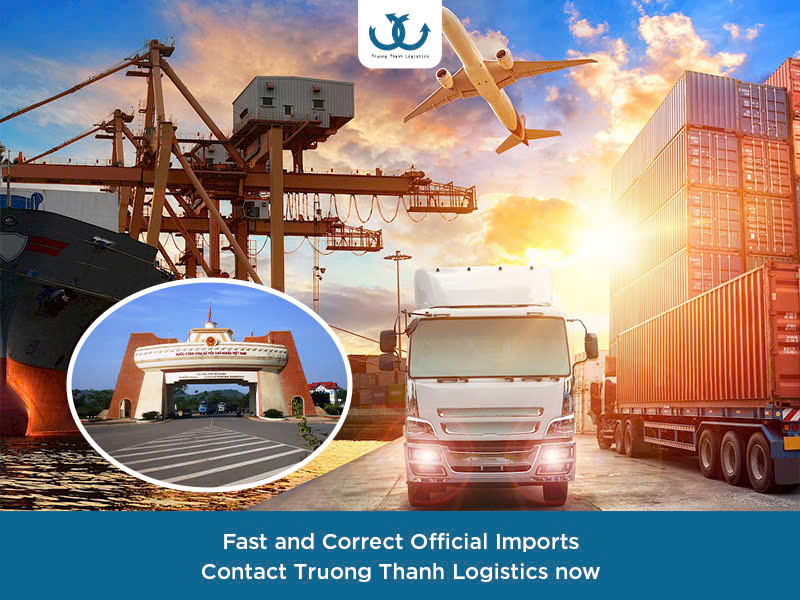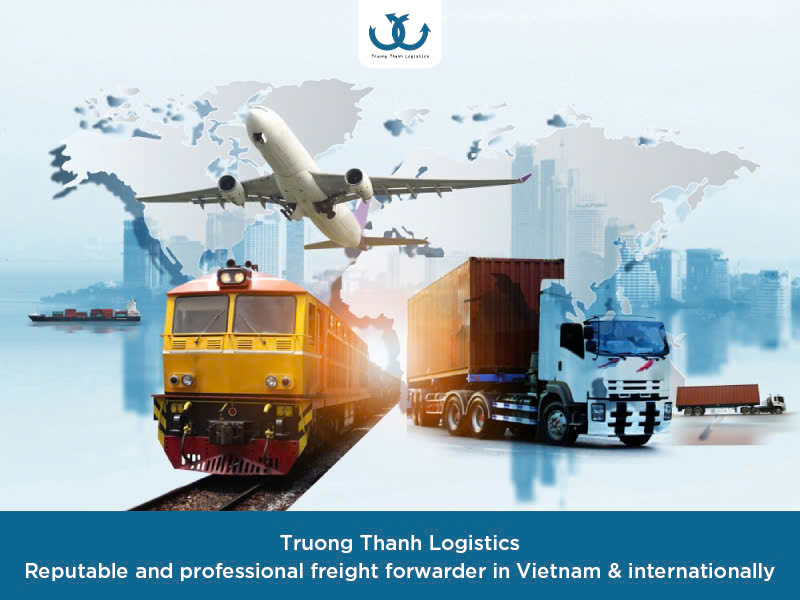The United States is one of Vietnam’s largest export markets — known for its diverse demand, strict standards, and complex logistics systems.
Shipping goods to the U.S. involves far more than simply booking a vessel or a flight; it requires careful handling of packaging, documentation, customs clearance, and compliance with U.S. import regulations.
To help Vietnamese businesses enter this demanding market more effectively, Trường Thành Logistics provides a comprehensive and practical overview of the process of shipping goods to the U.S. — covering shipping methods, procedures, and essential considerations when working with international logistics partners.
1. Overview of the Vietnam–U.S. Freight Market
The United States is Vietnam’s second-largest trading partner, with annual export turnover reaching tens of billions of USD.
Major product groups exported to the U.S. include:
- Garments, footwear, handbags
- Wooden furniture and construction materials
- Agricultural products, dried foods, and processed seafood
- Electronic components and technological equipment
- Consumer goods and household products
However, the U.S. also enforces some of the strictest import standards and documentation requirements in the world. Therefore, choosing a logistics partner with extensive experience and deep understanding of U.S. trade regulations is essential to ensure your goods arrive safely, legally, and on schedule.

2. Common Shipping Methods from Vietnam to the U.S.
Depending on the type of goods, budget, and required delivery time, you can choose among the following three main shipping methods:
2.1. Sea Freight to the U.S.
Features: The most common and cost-effective method, suitable for heavy, bulky, or large-volume cargo.
Transit time: Typically 22–35 days, depending on the route and destination port.
Shipping options:
- FCL (Full Container Load): Rent an entire 20ft or 40ft container.
- LCL (Less than Container Load): Share container space with other shipments to save costs.
Advantages: Low rates, accommodates most types of cargo.
Disadvantages: Longer transit time, more complex documentation.
2.2. Air Freight to the U.S.
Features: Fast, safe, and suitable for high-value or time-sensitive goods.
Transit time: Typically 3–7 days, depending on the carrier and transit route.
Shipping options:
- Air Express Services: DHL, FedEx, UPS, USPS.
- Air Cargo: For large-volume commercial shipments.
Advantages: Quick delivery, high security.
Disadvantages: High cost, limited in size and weight.
2.3. Combined Transport (Sea-Air or Air-Sea)
Multimodal transport is ideal for businesses seeking a balance between cost and delivery time.
For example, goods may be shipped from Vietnam to Singapore by sea, then flown to the U.S. by air.
This method is especially effective for seasonal products that must arrive on time while keeping costs under control.
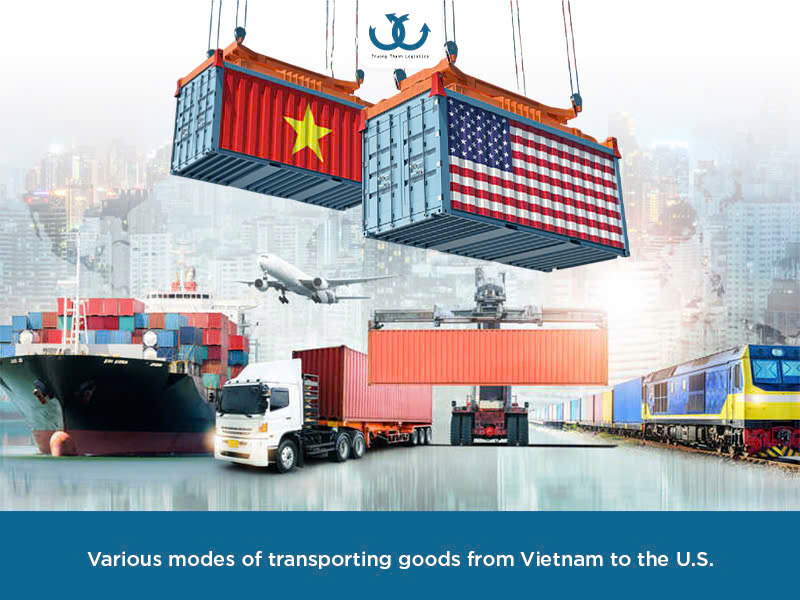
3. The Shipping Process from Vietnam to the U.S.
The standard process consists of five main stages, each involving specific documentation and responsibilities among the shipper, carrier, and consignee:
Step 1: Prepare Goods and Export Documentation
Identify product type, quantity, size, value, storage requirements, and prepare all required documents:
- Commercial Invoice
- Packing List
- Sales Contract
- Bill of Lading or Airway Bill
- Certificate of Origin (C/O) – if not yet available, you may use Trường Thành Logistics’ C/O application service
- Inspection Certificates (if applicable)
Step 2: Book Shipment and Schedule
- Choose transport route and method (FCL, LCL, Air Cargo).
- Book space with the shipping line or airline.
- Set a cut-off time to ensure on-time cargo delivery.
Step 3: Packaging and Inland Transport
- Goods must be packed according to international standards (ISPM 15).
- Labels must clearly indicate item codes, origin, and handling directions (e.g., fragile, upright).
- Transport goods to the seaport or airport for export procedures.
Step 4: Customs Clearance (Export–Import)
- File electronic customs declarations and submit export forms.
- Verify documents and inspect goods.
- Once cleared, goods are loaded onto vessels or aircraft.
- Upon arrival in the U.S., cargo must be declared to CBP (U.S. Customs and Border Protection).
Step 5: Delivery and Payment
- After U.S. customs clearance, goods are delivered to the consignee’s warehouse or distribution hub.
- The shipper completes payment and reconciles delivery documentation.
4. U.S. Import Regulations to Keep in Mind
The U.S. market enforces extremely strict import standards. When exporting goods to the U.S., ensure full compliance with the following regulations:
4.1. Product Safety Standards
- Food products must comply with FDA (Food and Drug Administration) regulations.
- Electronics must meet FCC (Federal Communications Commission) standards.
4.2. Labeling Requirements
- Must clearly indicate “Made in Vietnam,” product code, ingredients, and usage instructions (if applicable).
- Labels must be in English and follow FTC (Federal Trade Commission) requirements.
4.3. Import Declaration Regulations
- All imports must be approved by CBP.
- Importers must hold an Importer ID or EIN (Employer Identification Number).
4.4. Taxes and Fees
- Import duties depend on the product’s HS Code.
- Common charges include: Import Duty, Merchandise Processing Fee (MPF), and Harbor Maintenance Fee (HMF).
Failure to comply with these regulations can result in cargo being detained, destroyed, or returned, causing significant losses.
5. Key Tips for Shipping Goods to the U.S.
To ensure safe, timely, and cost-efficient delivery, businesses should note the following:
- Double-check consignee information and warehouse address in the U.S.
- Choose stable shipping routes and avoid peak seasons with inflated rates.
- Use international-standard packaging to minimize damage during transit.
- Prepare commercial and customs documents simultaneously to avoid export delays.
- Track shipments actively via logistics systems to monitor progress.
- Work with a reliable logistics provider experienced in U.S. trade — especially for commercial, food, or electronic goods.
6. The Role of Logistics Providers in U.S. Freight Operations
A logistics company is not just a carrier — it is a consultant, coordinator, and manager throughout the international shipping process.
A trusted partner will help you:
- Plan optimal routes, timelines, and transport modes.
- Handle documentation, customs declarations, and import–export papers.
- Provide transparent quotations and prevent hidden costs.
- Monitor shipments and manage potential risks during transit.
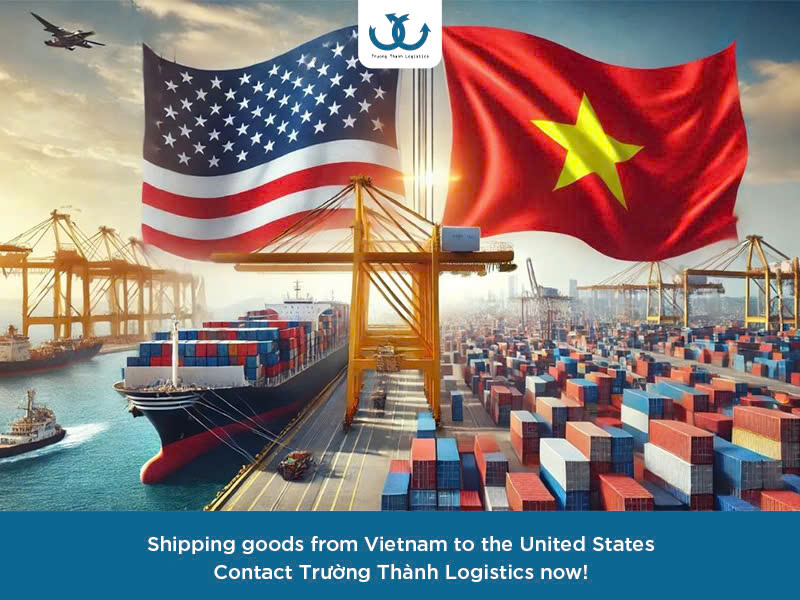
7. Trường Thành Logistics – A Trusted Partner for Shipping to the U.S.
With extensive experience in international logistics, Trường Thành Logistics is one of Vietnam’s leading providers of U.S. freight forwarding services meeting global standards.
We offer comprehensive logistics solutions, including:
- Cargo pickup in Vietnam, packaging, documentation, and customs declaration
- Transportation via sea freight, air freight, or multimodal options
- Customs clearance in the U.S. and door-to-door delivery to warehouses or distribution centers
With a global partner network, competitive pricing, and a professional logistics team, Trường Thành Logistics ensures fast, secure, and transparent delivery for all types of goods exported to the United States.
Shipping goods to the U.S. requires expertise, precision, and trustworthy partnerships. By preparing accurate documentation, selecting the right transport method, and complying with U.S. import laws, Vietnamese businesses can confidently expand their market presence and elevate their brand reputation overseas.
Contact Trường Thành Logistics today for professional consultation and U.S. freight services.




